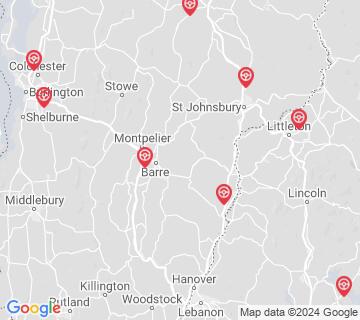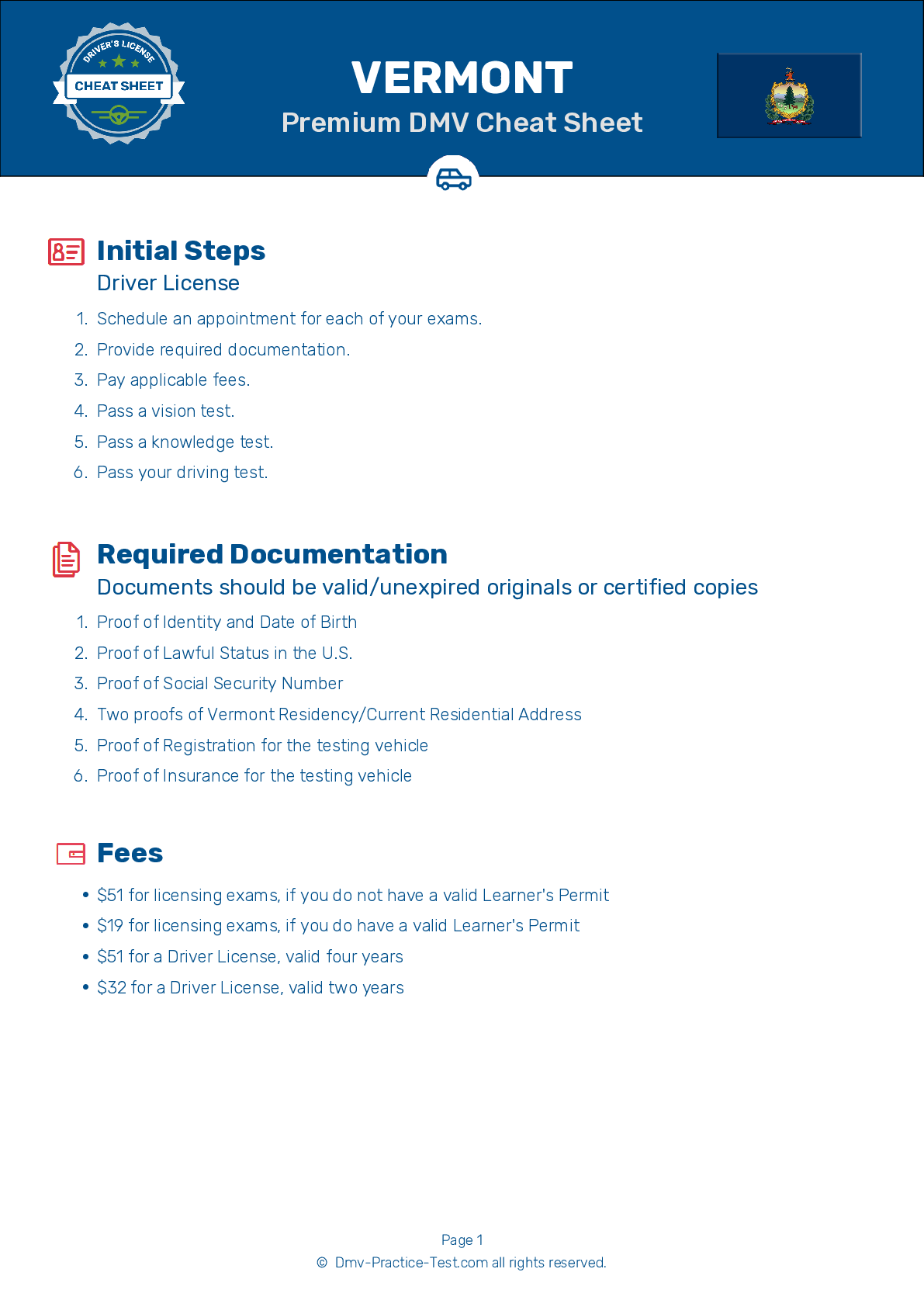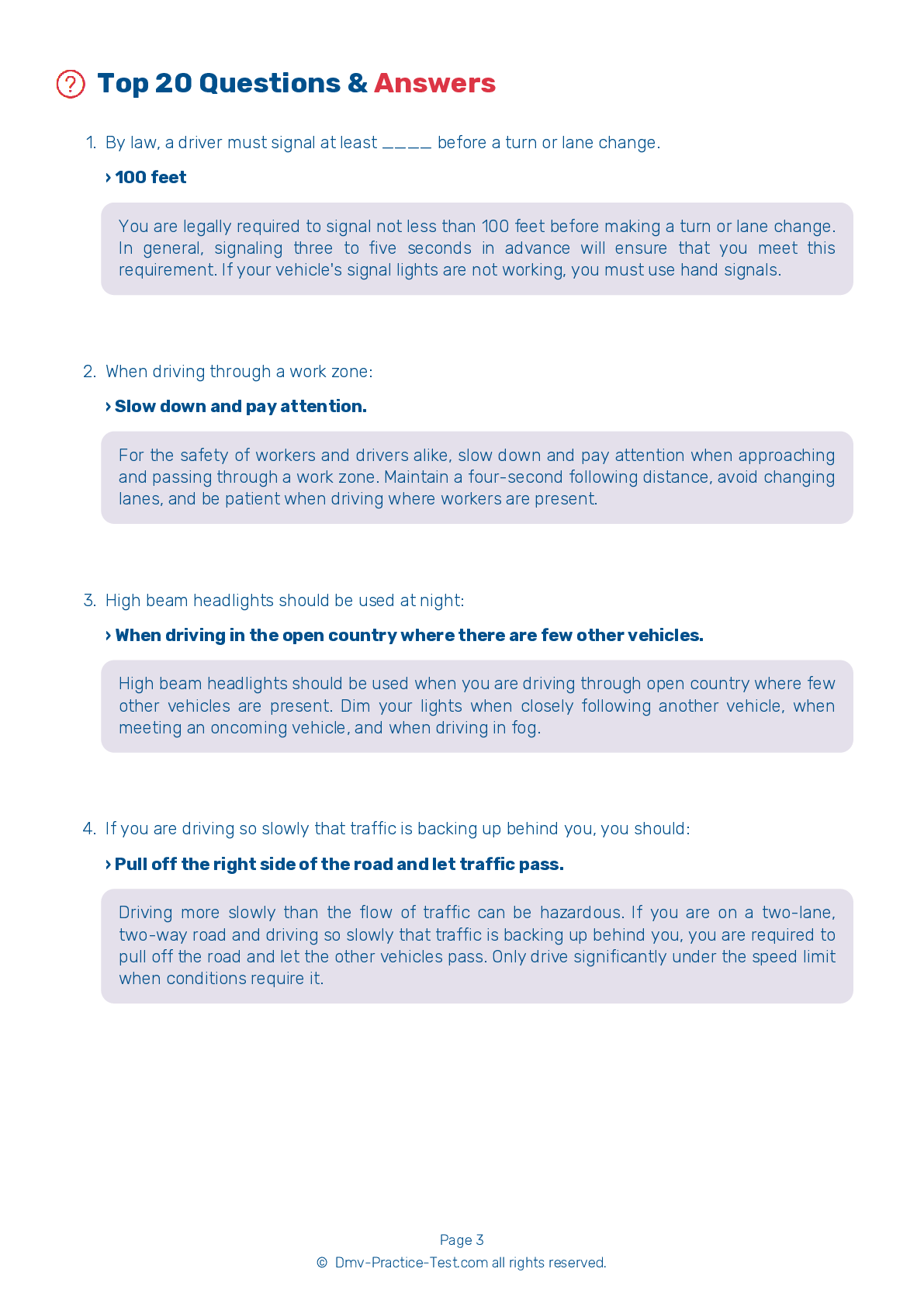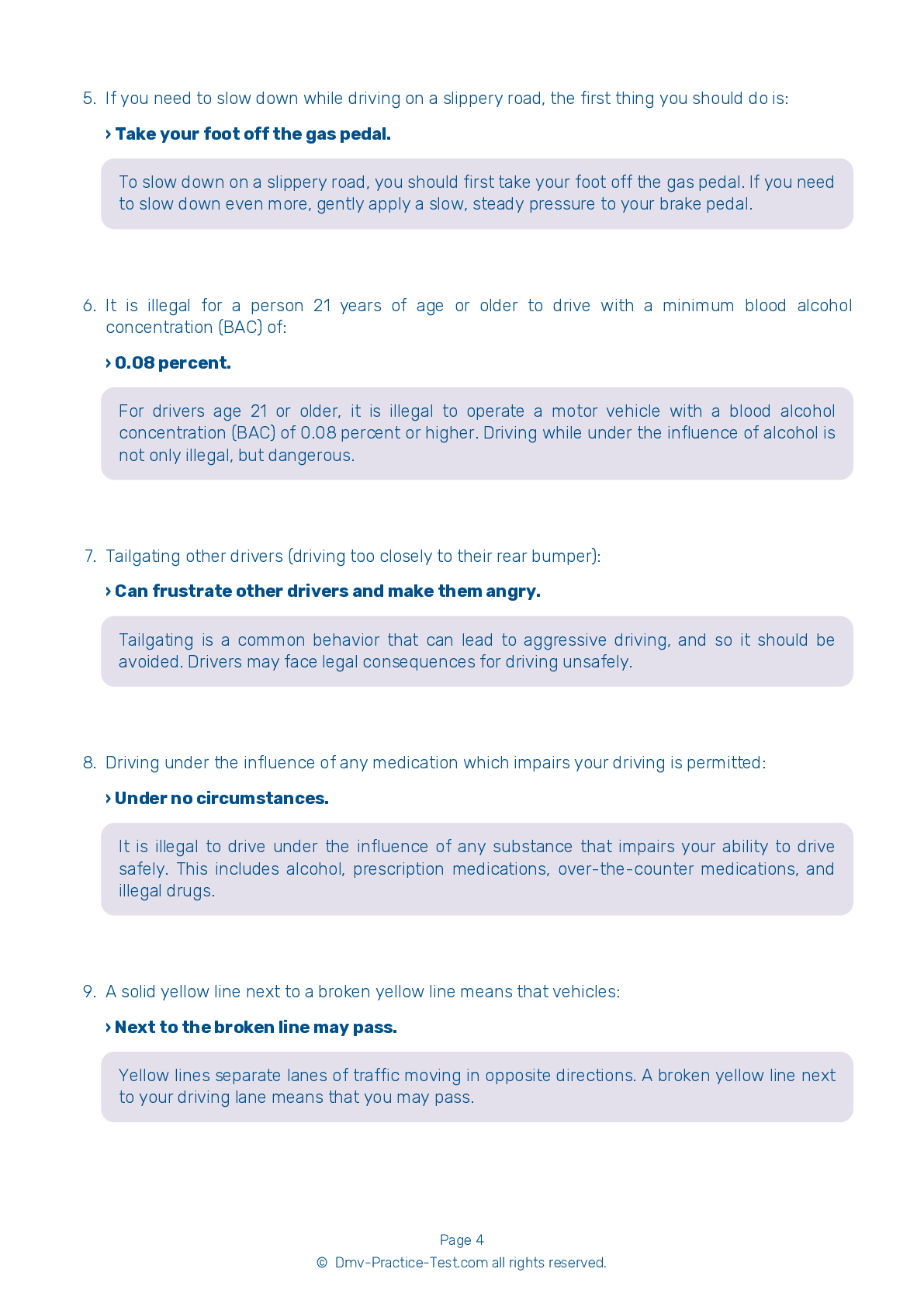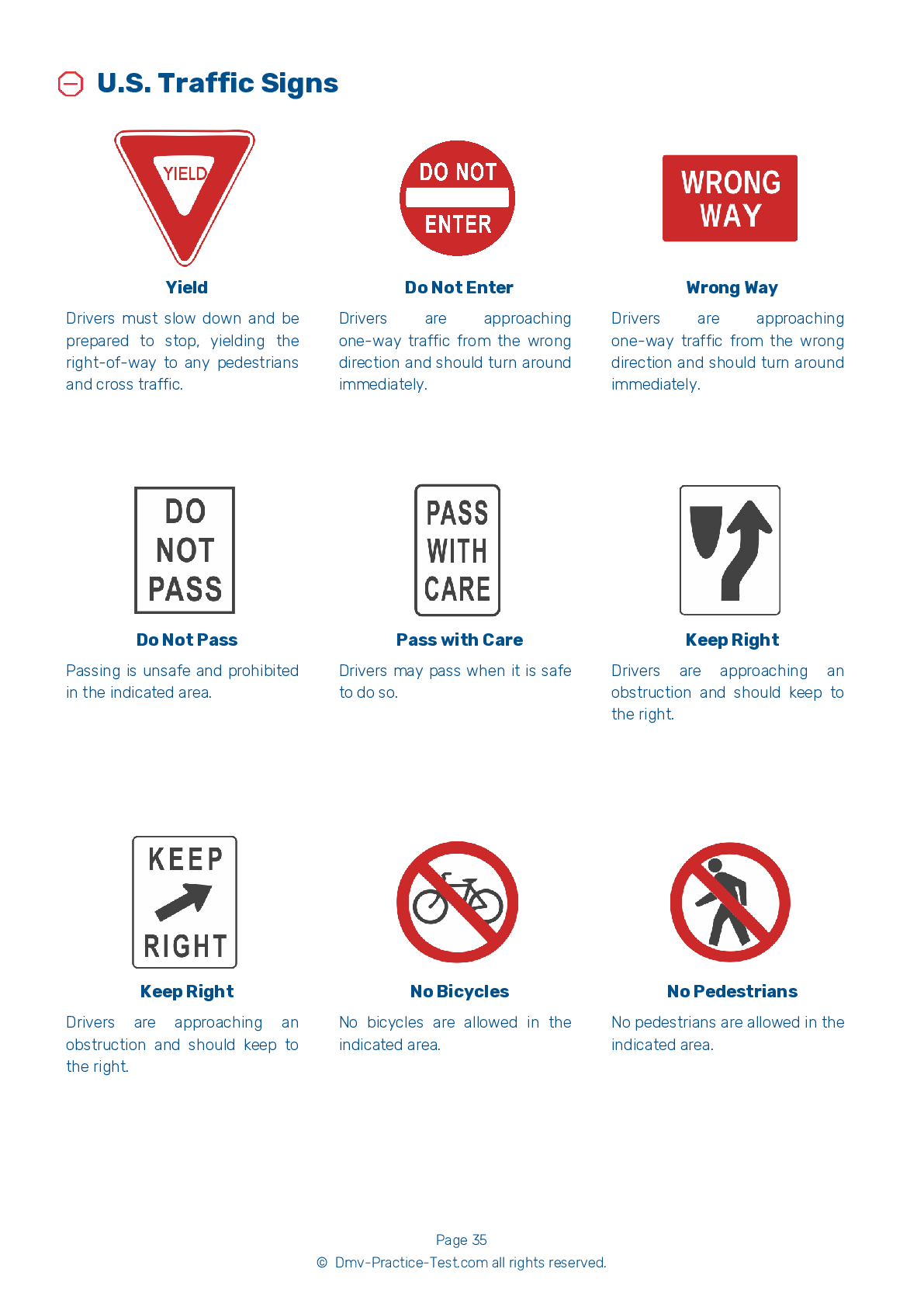FREE Vermont DMV Practice Test #18 Page 2 of 3
The Vermont DMV practise examinations have been updated for January 2025. It includes questions based on the Vermont Driver Handbook's most significant traffic signals and legislation for 2025. Use actual questions that are very similar (often identical!) to the DMV driving permit test and driver's licence exam to study for the DMV driving permit test and driver's licence exam.
On the practise exam, each question gets a tip and explanation to help you remember the concepts. The written component of the official Vermont DMV test will include questions about traffic rules, traffic signs, and driving statutes, as well as knowledge from the Driver Handbook.
To obtain a passing grade, you must correctly answer 16 of the 20 questions. Use the practise exam provided by the Vermont Department of Motor Vehicles to help you prepare for your instruction permit or driver's licence.
The DMV exam is available in several languages.
Using any kind of testing assistance will result in an automatic fail, and the DMV may take additional action against your driver's licence, so stay away from it.
7 . This sign means that:

This sign indicates that workers may be on or very close to the roadway ahead, so you should take special care when traveling through the area.
8 . When passing another vehicle on a road with two lanes traveling in opposite directions, you should:
When passing another vehicle on a two-lane roadway, you must return to the right side of the roadway when there is enough room between you and the vehicle you have passed.
9 . “Highway hypnosis” is a driving condition that can result from:
"Highway hypnosis” happens when you stare straight ahead at the roadway for long periods of time and stop actively scanning ahead, behind, and around your vehicle. This can lead you to zone out, making you very likely to crash into traffic slowing or stopping ahead of you.
10 . When exiting a highway, you should slow down:
When exiting a highway, you should get into the exit lane well in advance. Do not begin to slow down until after you have moved into the exit lane.
11 . Look over your shoulder to check your blind spot when:
Look over your shoulder to check your blind spot every time you want to change your vehicle's position. If you are turning, changing lanes, or pulling toward or away from a curb, you should check your blind spots.
12 . Drivers should use extra care when driving near snowplows because:
You should be especially careful when driving near snowplows because they are wider and slower than other vehicles. Snowplows often create a cloud of snow, causing visibility in the surrounding area to be lowered.
13 . A driver on an interstate highway must make a safe lane change:
You must change lanes to create more space when approaching a stopped police vehicle with flashing blue lights, a stopped emergency vehicle with flashing red lights, or a stopped maintenance vehicle with flashing amber lights. If you cannot safely move to a different lane, you must slow down.
Search the best driving school in your neighbourhood
2025 Vermont | Frequently Asked Questions
1. Not checking mirrors and blind spots before changing lanes or turning.
2. Speeding or driving too slowly for the conditions or posted speed limit.
3. Not coming to a complete stop at stop signs or red lights.
4. Incorrect signalling or not signalling at all.
5. Poor parking, especially parallel parking.
Remember, practice makes perfect, so take time to hone your skills.
